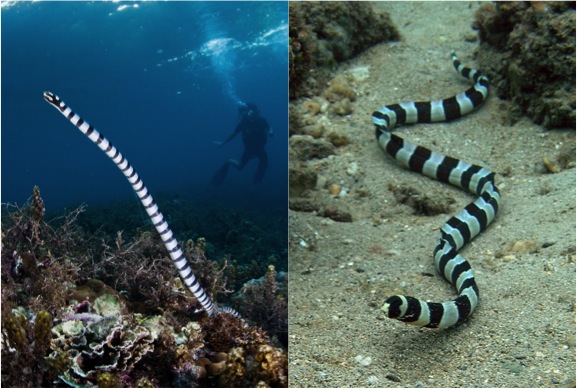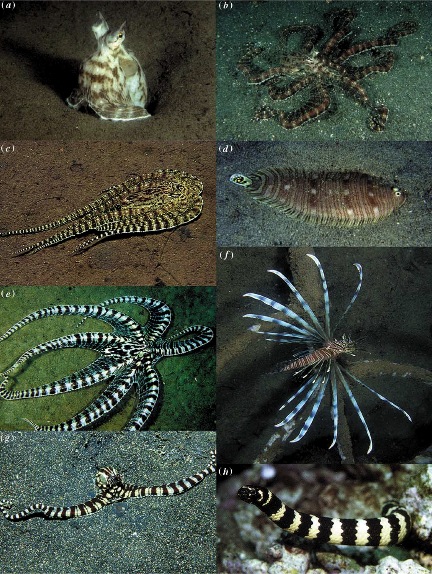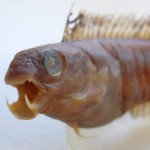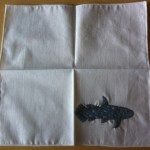
Source: Wikimedia Commons
We have a fashion emergency.
White after labor day? No.
Horizontal stripes? Not exactly.
Wardrobe malfunction? Definitely No.
Too much skin showing at the Grammys despite CBS’s best efforts to keep those scandalous celebs on the straight and narrow? No…oh wait….Yes…but not the example I was referring to.
I know what you are thinking…”How could it get any worse than this!?”
If you are a devoted Fashion Police (FP) enthusiast like I am, you too are a “fashion expert” (at least for thirty minutes every friday at 9:30|10:30 c) and are most likely well aware of the major fashion faux pas I am speaking of. For those less in the know ….
We just have some blatantly obvious cases of “Bitch Fish Stole my Look!”
Now I know all those celebrity sea beasties think they can get away with snagging each other’s fashion trends, but here at DSN we keep tabs on all the latest styles making a splash on the blue carpet…and fishes…we know.
So we leave it to the people to decide…..
Who wore it better?
Round 1…Fight.
Banded Sea Snake Laticauda colubrina or Harlequin snake eel Myrichthys colubrinus

Fang Blenny Plagiotremus rhinorhynchos or Cleaner Wrasse Labroides dimidiatus

Sea Urchin Astropyga radiata or Striated Frogfish Antennarius striatus

Flatworm Pseudoceros sapphirinus or Opistobranch Philinopsis gardineri

Calloplesiops altivelis (Fish) or Eel Gymnothorax meleagris

Mimic Octopus Thaumoctopus mimicus or Banded Sole (Zebrias sp.) or Lionfish (Pterois sp.) or Banded Sea-snake (Laticuada sp.)

What can I say…that last one is a repeat “Fish Stole My Look!” offender, but we give out plus points for creativity and all around badassery.
All jokes aside though, when a celebrity sea beastie steals another fishes’ (or invert’s) fabulous frock under the sea it’s not usually because they think they can rock it better. (Though it would be funny if that’s how evolution worked….)
On the contrary, there are many different reasons for mimicking others. Most usually, it’s because you yourself are completely harmless, but the model critter you are trying to mimic is 1. venomous/poisonous/just doesn’t taste good or 2. is just way better at defending itself then you are. This is known as Batesian mimicry and represents most of the examples shown here, like the poisonous sea snake and the quite harmless and the completely adorable snake eel or the beautifully delicate flatworm and it’s chemically rank sea slug pal.
When two species are equally toxic, take for instance monarch and viceroy butterflies because I couldn’t think of any aquatic examples, this is known as Mullerian mimicry. At first, it seems kind of quirky for as to why two already toxic species would need to steal each others looks. However, evolutionarily, predators learn faster to avoid both species when there is an increased chance they might nom a bad butterfly. Therefore it benefits everyone….except for the predator of course….but that’s what he gets for trying to nom the pretty butterflies.
Mimicry can go both ways though. In examples of aggressive mimicry, such as the cleaner wrasse and the fanged blenny, the blenny takes on the cleaner wrasse’s style purely for purposes of exploitation. Cleaner wrasse, are the well trusted “fish washes” on many different reefs. Bigger fish, such as grouper, trust them to keep their gill grills and chrome fins shinier than the rest of the grouper gansters out there. The blenny’s however, come in looking just like the other employee’s at Mr. Wrasse’s Fish Wash and instead of doing their cleaning duties, they take a bite out the grouper and run. Not cool blenny. Not cool.
As you are now aware, mimicking other celebrity fishes is a common occurrence in the underwater world and probably not as frowned upon as it is in Hollywood. Quite the opposite actually. Stealing your fellow sea beasties’ look might actually save you from an unfortunate end.
However, it does have me begging one final question….
Which one’s the model and which one’s the mimic?

…but I guess we already know the “Toxic” one don’t we…
References:
Moland, E. and J.P. Jones. 2004. Experimental confirmation of aggressive mimicry by a coral reef fish. Oecologia 140:676-683
Norman, M.D., J. Finn, and T. Tregenza. 2001. Dynamic mimicry in an Indo-Malayan octopus. Proc. R. Soc. Lond. B 268, 1755-1758
Randall, J.E. 2005. Review Article: A Review of Mimicry in Fishes. Zoological Studies 44(3): 299-328






I have seen both the harlekin snake eel and the banded seasnake while scuba diving, and it is very hard to tell them apart.
Both are beautiful and I am excited when I see either of them underwater.
The mimic octopus is downright scary in its camoflage, I have sadly never seen one myself but I wonder if I would even notice it if I went past one.